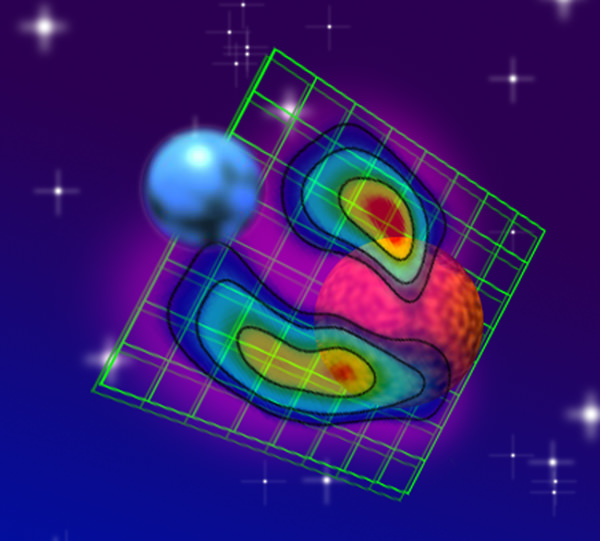http://en.wikipedia.org/wiki/Algol wrote:
<<Algol (β Per / Beta Persei), known colloquially as the Demon Star, is a bright star in the constellation Perseus. It is one of the best known eclipsing binaries, the first such star to be discovered, and also one of the first (non-nova) variable stars to be discovered. Algol is actually a three-star system (Beta Persei A, B, and C) in which the
bright primary Beta Persei A is regularly eclipsed by the
dimmer Beta Persei B. Thus, Algol's magnitude is usually near-constant at 2.1, but regularly dips to 3.4 every two days, 20 hours and 49 minutes during the roughly 10-hour long partial eclipses. There is also a secondary eclipse when the brighter star occults the fainter secondary. This secondary eclipse can only be detected photoelectrically.
The variability of Algol was first recorded in 1667 by Geminiano Montanari, but it is probable that this property was noticed long before this time. The first person to propose a mechanism for the variability of this star was the British amateur astronomer John Goodricke. In May 1783 he presented his findings to the Royal Society, suggesting that the periodic variability was caused by a dark body passing in front of the star (or else that the star itself has a darker region that is periodically turned toward the Earth.) For his report he was awarded the Copley Medal.
In 1881, the Harvard astronomer Edward Pickering presented evidence that Algol was actually an eclipsing binary. This was confirmed a few years later, in 1889, when the Potsdam astronomer Hermann Carl Vogel found periodic doppler shifts in the spectrum of Algol, inferring variations in the radial velocity of this binary system. Thus Algol became one of the first known spectroscopic binaries.
Studies of Algol led to the Algol paradox in the theory of stellar evolution: although components of a binary star form at the same time, and massive stars evolve much faster than the less massive ones, it was observed that the
more massive component Algol A is still in the main sequence, while the
less massive Algol B is a subgiant star at a later evolutionary stage.
The paradox can be solved by mass transfer: when the more massive star became a subgiant, it filled its Roche lobe, and most of the mass was transferred to the other star, which is still in the main sequence.

This system also exhibits variable activity in the form of x-ray and radio flares. The former is thought to be caused by the magnetic fields of the AB components interacting with the mass transfer. The radio emissions may be created by magnetic cycles similar to sunspots, but, as the magnetic fields around these stars are up to ten times stronger than that of the Sun, these radio flares are more powerful and longer lasting.
Algol is 92.8 light years from Earth; however, about 7.3 million years ago it passed within 9.8 light years and its apparent magnitude was approximately −2.5, considerably brighter than Sirius is today. Because the total mass of the system is 5.8 solar masses, and despite the fairly large distance at closest approach, this may have been enough to perturb the solar system's Oort cloud slightly and to increase the number of comets entering the inner solar system. However, the actual increase in net cratering rate is believed to have been quite small.
The name Algol derives from Arabic رأس الغول ra's al-ghūl : head (ra's) of the ogre (al-ghūl) which was given from its position in the constellation Perseus, representing the head of Gorgon Medusa. In ancient Arabian folklore, the ghūl dwells in burial grounds and other uninhabited places. The ghoul is a desert-dwelling, shapeshifting demon that can assume the guise of a hyena. It lures unwary travellers into the desert wastes to slay and devour them. The creature also preys on young children, robs graves, drinks blood, and eats the dead taking on the form of the one they previously ate..

The English names of Demon Star and Blinking Demon are direct translations. In Hebrew folklore it was known as Rōsh ha Sāṭān 'Satan's Head', via Edmund Chilmead, who called it 'Divels head' or Rosch hassatan. A Latin term from the 16th century was Caput Larvae 'Spectre's Head'. It was also linked with Lilith. Hipparchus and Pliny made this a separate, though connected, constellation.
It is known as 大陵五 (the Fifth Star of the Mausoleum) in Chinese astronomy, and also bore the grim name Tseih She, meaning 'Piled up corpses'.>>



